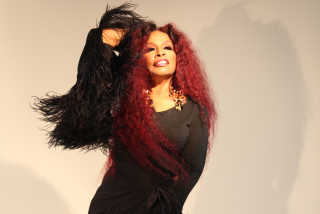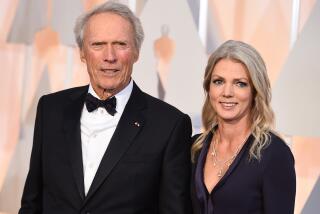THE HUMAN CONDITION / WHY WE FORM CLIQUES : We Won’t Let You Play in Our Sandbox
Birds do it
Bees do it
Even kids in nurseries do it
Let’s do it
Let’s form a clique --with apologies to Cole Porter Here we are in Clique Central.
At the Washington Hilton, a high-level party is going on. Over there at the bar the Famous Journalist is talking to the Military Hero. At the buffet line, the Very Important Committee Chairman is scooping up foie gras as he chats with the Local Celebrity. And in a far corner of the room, the Currently Trendy Ambassadorial Couple and the High Powered Lobbyist are holding a particularly animated conversation.
But Babylon-on-the-Potomac isn’t the only place where cliques rule.
On a Windy City playground, Little Joey and his buddies Tommy and Eddie are organizing a game of Teen-age Mutant Ninja Turtles. They’re going to play Leonardo, Donatello and Raphael respectively. Bruce, a classmate, wants to play the fourth hero, Michaelangelo. They don’t like Bruce. They don’t want him to play. They have their own thing going: Cliques.
Everybody’s doing it--this late-20th-Century form of tribalism.
That’s proof positive that whether exclusionary group behavior is natural (no one really knows), it certainly is universal. But are they good or bad? That’s a matter of some controversy.
“The good thing about a clique is we are more likely to learn from others when they’re similar to us,” says Martin Kaplan, a professor of research psychology at Northern Illinois University in DeKalb,Ill. “This is especially true if what we’re trying to figure out are subjective issues, like matters of taste or right and wrong.
“The bad thing about cliques is . . . we’re not going to get dissenting views, and that’s the kind of information you need for factual judgments.”
Vivian Gussin Paley has looked at cliques from the ground level: kindergarten.
She’s a Chicago teacher, recipient of a MacArthur Foundation grant, who believes that cliquishness is natural behavior.
But in her new book, “You Can’t Say You Can’t Play,” she argues that group exclusivity at the elementary school level is hurtful to the child, tends to inhibit learning and creates psychic scars that can last a lifetime.
“There are very few things that make a child sadder than being rejected,” she says. “A sad child does not learn very well. Children isolate children all the time. It is something people never forget all their lives and bears directly upon their ability to function in a group.”
Paley believes that children gravitate toward cliquishness not only because they find it empowering but because it is a natural outgrowth of family life, which she calls “a very private, exclusionary institution.”
But she believes that inclusion is equally empowering, so she attempted to break down classroom-oriented cliques by establishing the rule that forms the title of her book.
Paley admits that, in a sense, she was attempting to legislate fairness and inclusion but, as the book details, her kids soon moved from skepticism to acceptance. (In her search for the egalitarian playroom, Paley found that her little ones were subject to the same kinds of group pressures that adults are--cliques are often based on toys, power, certain skills and sometimes looks.)
So whether it’s a Supersoak or a new President in the White House, a clique will form around it.
But Americans are not ultimate in exclusionary societies.
Kaplan says when it comes to tribal behavior, the United States contrasts favorably with Japan and Europe (the latter where cliques go beyond family into clannish and regional loyalties that are often destructive--as in Yugoslavia).
“We’re more task-oriented than other societies,” he says. “We say work is important and that getting along socially is secondary to getting the job done--and getting the job done sometimes means going outside your clique. Americans are more individualistic.”
Of course, every rule has its exception.
Dateline: Washington.
Here on the banks of the Potomac, cliquishness is in full flower. And just as in Hollywood, a city Washington is often compared to, raw naked power determines what cliques count and what don’t.
“It is a cliquish city, but not the way other cities are,” says Sharon King, a local TV executive. “People in D.C. are in cliques by profession. We don’t divide up by neighborhoods or ethnic communities. It is difficult to get into a clique and understand how it works, because if you apply what’s traditional to your region, that’s not what works here.”
Says Chuck Conconi, who covers the local social scene for Washingtonian magazine: “The only thing that matters is power, and that’s generally connected through the structure of government. If you have power, you are socially dominant and prominent. But it’s the kind of thing which has no permanence; the permanence is the next election.”
Beltway insiders point to a number of cliques that make up the D.C. power structure. Although there is some disagreement as to how important each one is, the consensus says that the movers and shakers look something like this:
* The White House: the Prez, his Cabinet members, and their high-level administrative staffs.
* The Hill: that’s Capitol-ese for Congress. Powerful Senators and major committee chairmen are in the front rank. Fun guys like Sen. Alan Simpson (R-Wyo.) not only have clout but are highly sought-after party animals. And just because some people may be on different sides of the political fence, that doesn’t mean they can’t clique together: Just check out the well-known political odd couple of strait-laced Sen. Orrin Hatch (R-Utah) and former wild man Ted Kennedy (D-Ma.).
* Journalists: Larry King, Sam Donaldson, big news anchors. White House reporters like Andrea Mitchell, TV types like John McLaughlin and Jim Lehrer. About the only group in town not dependent on elections to maintain their power base.
* Lobbyists and Lawyers: Like Clark Clifford, before he was indicted. Or Jack Valenti, the film industry’s man in D.C. The more access to the corridors of power, the more clout to the clique.
* The Military: A clique with real firepower but generally ignored outside Pentagon hallways. Unless, of course, a successful war has been waged, which is why Colin Powell and “Stormin’ ” Norman are hot on the party circuit.
* Local Celebrities and Glamour Couples: Mark Russell, political satirist. Robert Altman, lawyer, and wife Linda (“Wonder Woman”) Carter.
Missing in action: developers, real estate types, businessmen, because they can’t possibly match the influence of a single U.S. Senator; and the diplomatic corps, which only makes waves if there’s a particularly sexy or fun ambassador in town.
“The most boring parties are the embassy functions,” says Chuck Conconi, “because all they’re basically here for is to sell their product, which is their country.”
And the Clinton victory? Obviously, that creates a whole new series of cliques, which could potentially include an Arkansas faction; an intellectual Rhodes scholar crowd; environmentalists surrounding the Gores; the Hollywood clique, headed by Clinton buddy Linda Bloodworth-Thomason; a children’s rights group surrounding Hillary.
Alma Viator, vice president of the National Theatre, cautions that no matter who’s in power, cliques are eternal. They define distinct territoriality yet remain mysterious.
“It’s this very exclusive club, and it’s hard to understand it,” she says. “It’s the same in Hollywood, where you have these big studios and powerful agents, and trying to figure out how to operate is very confusing. Trying to sustain your position in the different cliques is very difficult, because of the mercurial things.
“Like in both cities you have these overnight stars, people who’ve made it in a hit film or someone who gets elected, and all of a sudden everyone wants to know them. Or they bomb out in a film or make one misstep, and no one will touch them.”
More to Read
The biggest entertainment stories
Get our big stories about Hollywood, film, television, music, arts, culture and more right in your inbox as soon as they publish.
You may occasionally receive promotional content from the Los Angeles Times.






